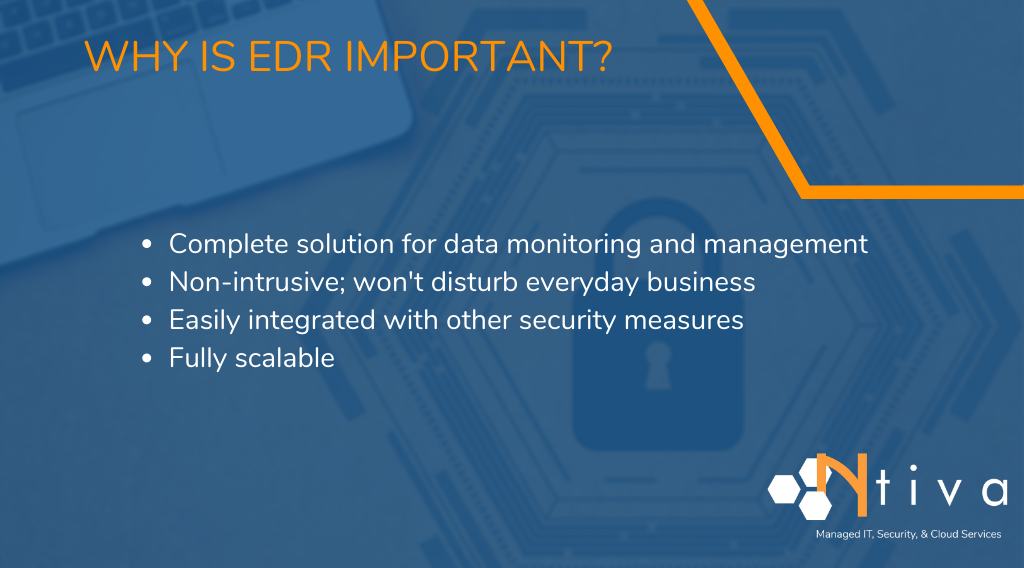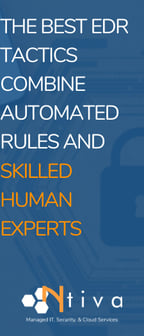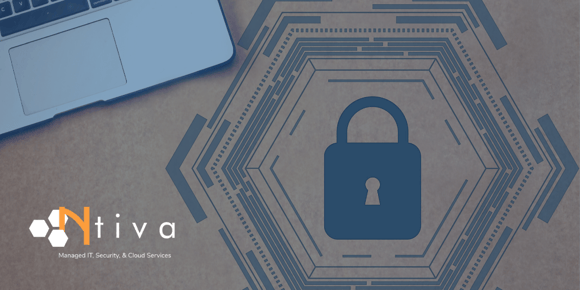While in the past all it took were firewalls and anti-virus software, keeping up with your company’s cyber security needs is now a full-time job. This isn’t just because hacking practices have become much more sophisticated (although that definitely has something to do with it).
An even bigger part of it is that the modern-day workplace has evolved, and the traditional way of conducting business from a desktop within the confines of four office walls is well behind us. Nowadays, many tasks are completed outside of the office, and some employees may not even have an official office space at all.
The key to keeping your business operations safe is to focus on a security plan that caters to the “anytime, anywhere” workplace model. With this mindset, it’s no longer enough to focus solely on protecting the company’s network alone.
Instead, the solution is to focus on securing every device that handles company information.
Tablets, phones, laptops, desktops - they all need to be monitored for security threats, and the best way to do this is through Endpoint Detection and Response services.
Our team can help you to answer these questions, but even better, our Advanced EDR solution can safeguard your data with 3 different layers of protection. It combines a critically acclaimed AI solution with seasoned security experts and skilled IT techs and works around-the-clock for complete endpoint protection
What is EDR?

Endpoint Detection and Response, EDR for short, is a security solution that uses a combination of continuous monitoring and data collection on end user devices to detect potential cyber threats.
The keyword here is endpoint; EDR doesn’t just monitor and analyze a network, but all endpoints (which basically just means all devices) communicating with that network.
In terms of functionality, these are the 3 main tasks that a successful EDR is meant to accomplish:
- Monitor and collect data in real-time to detect threats
- Analyze the collected data to determine threat patterns
- Respond immediately to any detected threats and remove them
If you know anything about Intrusion Detection Systems (IDS), you might be thinking that all this sounds familiar. Similar to EDR, IDS is aimed at detecting intrusions and responding to threats.
But the difference is that EDR works on all individual devices instead of the network alone.
Why is EDR Important?

To answer this question, just take another look at those bullet points above. More specifically, though, utilizing an endpoint protection platform is an important aspect of any cybersecurity plan because more workplace practices are leaning towards the remote working model.
Long gone are the days of heading to the office every morning at 8 am and calling it a day at 5 pm, leaving all work behind for the evening. Advances in technology are making it more possible to work from any place at any time from any device.
Even if you don’t currently follow a remote work model and allow employees to work from home, EDR still plays a role. Your employees are likely to use several different devices for getting their work done, and why wouldn’t they?
It’s an amazing thing to be able to shoot a quick work-related email from a smartphone while out on lunch break.
But this also opens doors for a greater risk of data breaches, and this is where EDR comes into play. With it, you’ll be able to better monitor and manage data from all devices, even those that are miles away from the office.
Other Benefits of EDR
The gravitation towards a more remote work environment isn’t the only reason to invest in an EDR strategy. The best way to look at it is to view EDR as a proactive security measure.
Rather than sit back and wait to respond to cyberattacks as they happen, EDR takes an entirely different approach. It seeks out potential threats before they even happen by pinpointing irregular activity and responding to it immediately, stopping hackers in their tracks.
Here are a few more benefits of factoring EDR into your cybersecurity budget:
- It provides a complete solution for data monitoring and management.
- It’s non-intrusive, so it won’t disturb everyday business operations.
- It’s suitable for both small businesses and large scale enterprise networks.
- It can be easily integrated with other security tools and can even detect cloud based threats.
How Does EDR Work?
For EDR to be effective, the first step is to install the system on each device that needs protection. Once that’s done, it can start continuously monitoring all computing actions relating to the network on each of these devices.
All of this data is recorded and kept in a safe place - a central database - for further analysis. After a piece of data has been recorded, EDR fully analyzes it and stores it for a rainy day. And by a rainy day, we mean a day where a potential threat is detected.
Once the system detects a threat, it will compare it to the stored data to determine if network security is at risk. If the system determines that yes, there is a risk, an alert is sent out to the end-user or IT team.
Many EDR solutions available today are completely automated. But the best tactics use a combination of automated routines for early detection and skilled human experts for remedying the issue before it can do any actual harm.
How to Choose an EDR Solution
We understand that every business has a different set of cybersecurity needs, so it’s really important that you choose an EDR solution that’s right for you.
Whether you’re a small business owner or managing the security of an entire enterprise, there are a few questions you should ask yourself:
Why are you investing in EDR in the first place?
First thing’s first, you must have a clear understanding of your end goal. Determining your highest level of concern will help you to narrow down EDR solutions from the get-go. Here are a few potential problems you might be looking to solve with this new security measure:
- Your IT team has little to no visibility of what’s going on with user endpoints.
- You have an endpoint security product in place already, but threats are still slipping through the cracks.
- The compliance requirements of your industry mandate the use of continuous security monitoring.
These are just a few examples of what you might be trying to solve, but the takeaway is that understanding why you’re investing in EDR is the first step in landing on the right solution.
What level of expertise does your system require? 
EDR is a 24/7 job that is best performed through a combo of well-trained security professionals and advanced artificial intelligence technology.
Without the time commitment and the right expertise, your EDR solution will get you nowhere.
Focus on choosing a team with expertise in several areas of discipline, including security engineering, operations, and research as well as data analysis and threat hunting.
What are the EDR solution’s main methods of threat detection?
Once you start evaluating a specific solution, pay close attention to the types of threats that are detected and the technologies/techniques used for detecting them.
Our team can help you to answer these questions, but even better, our Advanced EDR solution can safeguard your data with 3 different layers of protection. It combines a critically acclaimed AI solution with seasoned security experts and skilled IT techs and works around-the-clock for complete endpoint protection.
If you’re interested in learning more about our available EDR solutions or you need help with crafting a security plan that’s right for you, get in touch today.




